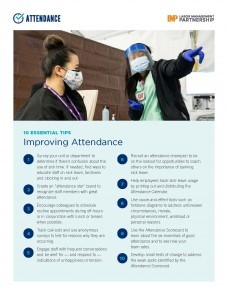TOOLS
(plain node.html.twig - needs theming)
( still node.html.twig ... )
Use Learning Boosters to deepen your team's understanding of core principles and skills fundamental to our Labor Management Partnership.
Each booster kit includes:
- Video
- Facilitator guide with a variety of activities
- PowerPoint deck
- Learner worksheet
( end node.html.twig ... )
Humans of Partnership:
Hank q1q2-2021
See the whole issueDecreasing Diabetes Disparities
Deck
Personalizing care improves outcomes for Latino patients
When it comes to addressing health care disparities, medical office assistant Anna Jenkins thinks her unit-based team is up to the challenge.
“I can go to my UBT members and say, ‘This is a care gap. Give me your feedback. Give me your ideas,’” says Jenkins, an OPEIU Local 30 member and labor co-lead for the Rancho San Diego Primary Care team. “Our administration listens to us. They’re very open to letting us try it our own way.”
The Level 5 team is leveraging Labor Management Partnership principles and tools to communicate, coordinate and customize care for Latino patients with diabetes. The approach has led to better health outcomes and improved service for a group disproportionately impacted by diabetes.
The unit-based team has increased the number of Latino patients ages 65 to 75 whose blood sugar levels are under control, according to recent clinical quality measures.
“That partnership between management and labor is important,” says Silvia Hernandez, RN, medical office administrator and the team’s management sponsor. “This teamwork helps us to improve patient care and quality with excellent member satisfaction.”
Adapting approaches
Key to the team’s success is partnering with Complete Care Management, a specialized strike force that monitors the health of patients who struggle to control chronic conditions, such as diabetes and high blood pressure.
To better support her Latino patients, care manager Lily Thamiz, RN, has adapted her approach. She books longer appointments for Spanish-speaking patients who need interpreters, refers others to bilingual diabetes education classes, and relies on phone calls to connect with those short on time.
“The only time we can talk is when they’re driving,” says Thamiz, a member of Specialty Care Nurses of Southern California, an affiliate of UNAC/UHCP. “These are solutions I’d never considered before.”
UBT members tailor treatment in other ways, too. To ensure continuity of care for Latino patients in their 60s and 70s, they standardized the steps needed to download and share data from glucose monitors. Providers use the devices to track patients’ blood sugar levels and adjust their medications. By consistently managing and sharing data, staff members guarantee they do not miss crucial patient information when communicating with one another.
“They make you feel like you really matter,” says Mary Hart, 71, a Latina patient who has diabetes. “They really show their concern for your health.”
Hank q1q2-2021
See the whole issueEquity for All
Deck
Teams answer the call to address care gaps
“Everyone must put on their leadership hat. It doesn’t relate to title or overall responsibility — it’s what you control and influence from where you stand,” said Ronald Copeland, MD, senior vice president and chief equity, inclusion and diversity officer, at the National Equity, Inclusion, and Diversity Virtual Conference Series in October.
The Labor Management Partnership is designed to foster leaders at every level, to encourage everyone to use their voice and add their ideas to solving the challenges at hand. As our nation and our organization seek new ways to advance equity and diversity — including equity in health care — doing the right thing has never been more important.
“Action matters more than passion, and impact matters more than intent,” Dr. Copeland said. “It’s great to say, ‘I want everybody to achieve equity and inclusion,’ but we have to do the actions that make that occur.”
See equity in action in this issue of Hank with inspiring actions taken by 4 unit-based teams from across the organization. Together, their commitment to achieving equitable outcomes in maternal-child health, and in treating diabetes and high blood pressure, is reshaping what culturally sensitive care looks like for thousands of our members and patients.
TOOLS
Humans of Partnership:
TOOLS
Videos
()
At the Labor Management Partnership, how we make decisions is just as important as the decisions themselves. Interest-based problem solving and consensus decision making are 2 important methods we use to solve problems, improve performance and cultivate good working relationships. View this short video and use the related tools to boost your knowledge and skills.



